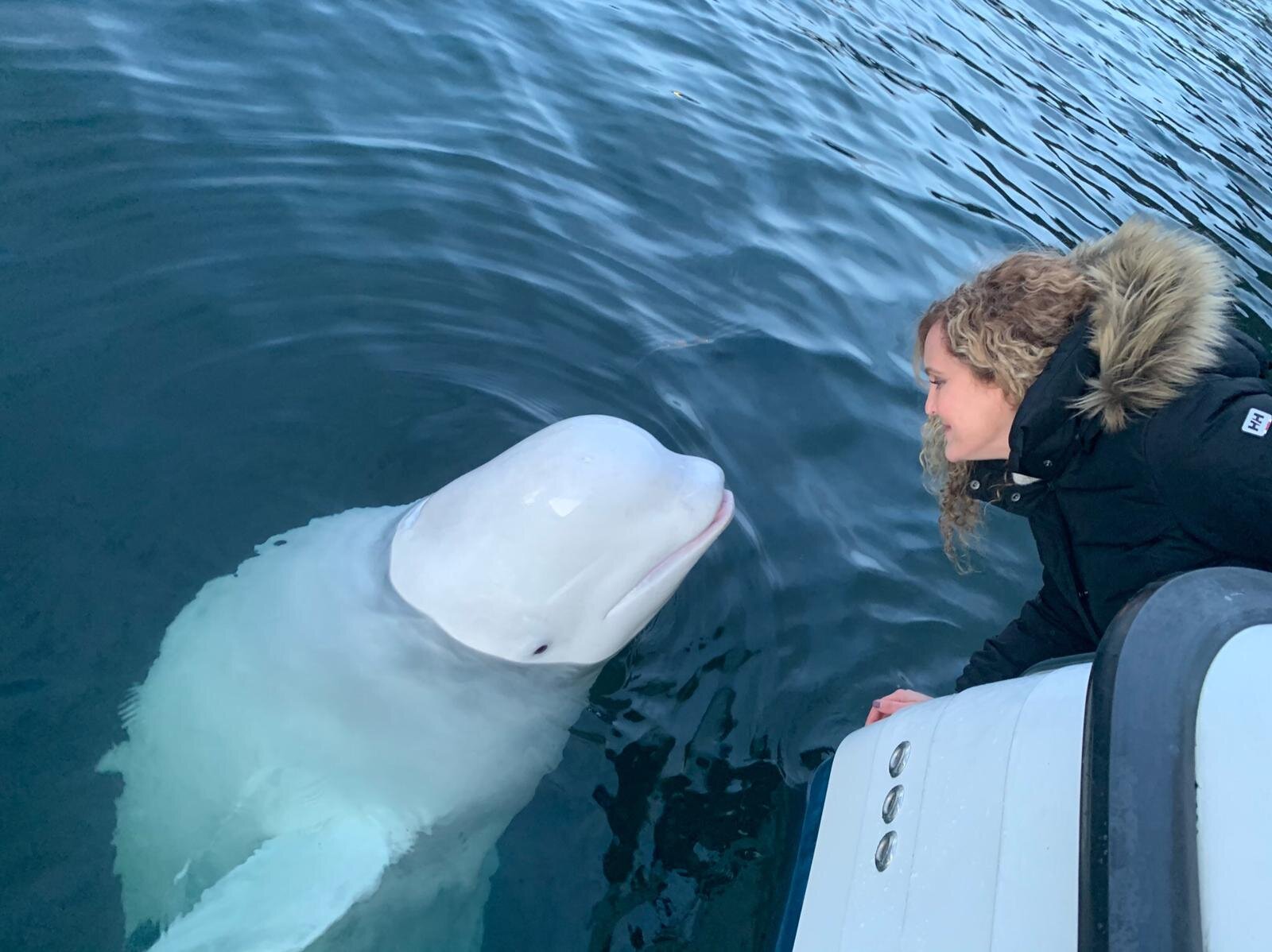
Justice for Hvaldimir
Norway Won’t Investigate Hvaldimir’s Suspicious Death – Claims No Clear Cause
The final autopsy report for the beluga whale Hvaldimir has been released without providing a clear cause of death or explanation for the concerning injuries that were initially reported. Despite this, the police have decided not to pursue an investigation, a move that NOAH and OneWhale strongly criticize, citing unresolved questions and expert opinions suggesting the possibility of wildlife crime.
The police have stated that they found no evidence that would warrant an investigation into the whale’s death. However, the autopsy does not determine a definitive cause of death nor explain the injuries that prompted NOAH and OneWhale to file a formal complaint. Of particular concern is a stick lodged in Hvaldimir’s mouth, which caused an infection. While the Veterinary Institute reported this injury, the possibility that it was caused by human intervention cannot be ruled out. Additionally, the report notes two broken ribs. The autopsy confirmed that Hvaldimir was in good physical condition, contradicting the police’s initial theory that the whale had starved.
Expert Testimonies Raise Questions
Several experts have raised concerns about the findings and highlighted possible foul play:
Dr. Francois le Grange, an experienced wildlife veterinarian, stated:
“I have been following Hvaldimir’s story for years, and very little about this makes sense. After reviewing multiple images and videos of his body, and consulting forensic pathologists worldwide, I believe the only logical explanation is an unnatural cause of death. The presence of fresh blood coming from his blowhole upon recovery suggests a per-acute unnatural event, not a chronic illness.”Geir Skauge, a retired forensic expert with 24 years of experience, reviewed photos and stated:
“The images reveal an injury that closely resembles a contact gunshot wound. The contusion ring and torn edges are indicative of a firearm being pressed against the skin at a close angle.”
NOAH’s Response
Veterinarian Siri Martinsen of NOAH expressed deep concern over the police's dismissal of potential illegal action:
“We are concerned that the police have disregarded the possibility of human involvement. The necropsy does not exclude this, especially with the infection in Hvaldimir’s mouth caused by the stick — which could be linked to human actions. The suggested cause of death, sepsis, remains a hypothesis, and could also be caused by one of the circular wounds. Several experts have confirmed that the circular wounds resemble gunshot injuries. The lack of explanation of these wounds by the police is deeply troubling.”
OneWhale’s Concerns
OneWhale echoed these concerns, pointing to ambiguities in the findings and questioning why no tests for gunpowder residue were conducted around the circular wounds — a key recommendation from forensic technician Geir Skauge.
Regina Haug, director of OneWhale, stated:
"The authorities received expert opinions from whale veterinarians, pathologists, and a forensic technician with decades of experience. Yet, it seems that these expert analyses have been largely overlooked. The initial speculation that Hvaldimir starved to death was unfounded, and the suggestion that no illegal activity is involved is equally unsupported by the available evidence. We expect that the authorities would take the possibility of criminal actions against endangered animals seriously."
Reward for Information
A reward of 50,000 NOK (approximately $5,000) is being offered for any information that may help resolve Hvaldimir’s death.
Summary of Expert Opinions
NOAH and OneWhale have collected statements from various experts, emphasizing the importance of not overlooking potential criminal actions against the whale.
Forensic Technician Geir Skauge: Based on images, Skauge identified what he described as a typical gunshot wound with a "contusion ring" and torn edges, indicating close-range shooting.
Wildlife Veterinarian Francois le Grange: After reviewing images, Le Grange stated that the injuries were unlikely to be from natural causes and suggested human involvement.
International Parasite Experts: Researchers at the University of Padova and Turkish Marine Research Foundation confirmed that the injuries do not match those caused by parasites, ruling out this hypothesis.
Experts on human-induced mortality in small cetaceans, Duke University: Explained that the injuries do not resemble scavenging marks from birds.
The Beluga Project, Canada: Having conducted 600 beluga autopsies, researchers at The Beluga Project noted that the injuries seen on Hvaldimir did not match any natural causes they had observed in their extensive research on belugas (none of their whales had gun shots).
All consulted experts raised the possibility of gunshot wounds, with no alternative explanation yet provided.
